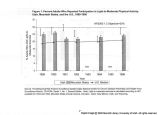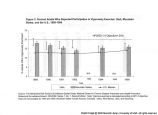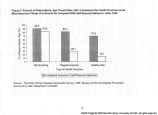| OCR Text |
Show of a double tax deduction. In order to eliminate the double tax deduction, the tax payer would be given the choice of which deduction they preferred. Those individuals who chose the federal plan will not be included in the tax deduction on the state plan. Budget Items. The Commission recommended $1 million of which $350,000 was identified for the continuation of already established programs and the remaining $650,000 was to fund new programs who applied for assistance last year but were not funded. The Primary Care Grants program and was allocated $350,000 again in one-time funding. The program was designed to help the working poor, homeless people, and ethnic minorities who otherwise would not have access to health care. The Commission recommended $200,000 for the start-up costs of the southern Utah Area Health Education Center (AHEC) and $200,000 was allocated for the second of four centers. This center will open in the Cedar City/St. George area. The Commission recommended $500,000 to fund more public school nurses. The legislature allocated $350,000 to the State Office of Education for the purpose of hiring more school nurses. The Commission requested onetime funding of $300,000 for a state data system and one-time funding of $1,800,000 for the second MMR immunization. The legislature allocated $250,000 for the second MMR immunization and did not appropriate funds for a state data system. Health Policy Seminar: Mental Health Coverage-What is the Best Approach for Utah? Abstracted from a Summary Prepared by the Governor Scott M. Matheson Center for Health Care Studies The Utah Health Policy Commission and The Governor Scott M. Matheson Center for Health Care Studies sponsored a joint seminar in May 1997 to discuss mental health coverage. Twelve papers authored by mental health professionals, representatives of public and private agencies, mental health advocacy organizations, employers, insurance executives, and family members of those with mental illness provided the background for the discussion. Robert Huefner, Director of The Matheson Center for Health Care Studies, facilitated the discussion. He explained that the purpose of the seminar was to assist Utah policymakers as they considered options for improving access to mental health services. Below are the key points that emerged from the seminar. Parity for mental health, in insurance coverage, could: • Address the issues that confront those with mental illness in the form of social policies, business practices, and societal stigmas. • Assist those who need expert care for mental illness to overcome financial barriers to accessing care. • Address the differences that create or sustain the attitude that individuals with mental illness are separate from those who have "physical" illnesses. • Bring insurance coverage up to the level of understanding of mental illness that exists today. • Reduce the financial and service delivery burdens placed on the public mental health system by those who might otherwise be funded by or served through private insurance. Achieving parity in insurance coverage for mental illness poses some concerns and risks, such as: • Concerns related to the stability of purchasers' desire and willingness to continue coverage in the face of potential increases in the cost of insurance or a decrease in choice of coverage. Coverage purchased by small groups and individuals are thought to be most affected by these concerns. • Concerns that parity for mental health coverage would offer only a partial solution to improving access to treatment for mental illness, as long as a large percentage of covered lives are insured through plans that are exempt from such requirements. • Concerns that despite recent advances in the treatment for mental illness, decision-makers (payers, legislators, and the public) remain skeptical of the ability of the health care system to manage mental health care on the basis of controlling costs and achieving efficacy in treatment. 150 |










































































































































































